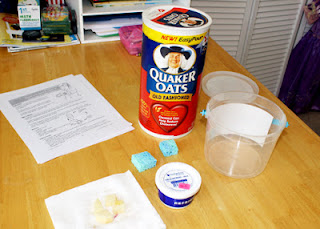Although this week was supposed to detail life cycles of various types of invertebrates, it ended up primarily focusing on a couple of popular insectival life cycles. I figured this was okay since we had already covered other invertebrate life cycles during our studies earlier this month and last.
- Completed Evan-Moor ScienceWorks for Kids: Animals without Backbones, Grades 1-3 "There Are Several Types of Invertebrate Life Cycles - Mini Book" (page 40).
- Read From Caterpillar to Butterfly by Deborah Heiligman.
- Read A Butterfly's Life by Ellen Lawrence.
- Read Can You Tell a Butterfly from a Moth? by Buffy Silverman.
- Watched The Magic School Bus: Bugs, Bugs, Bugs! DVD ("Butterfly and the Bog Beast" episode) by Scholastic from Netflix.
Wednesday
- Read Starting Life: Ladybug by Claire Llewellyn.
- Read A Ladybug Larva Grows Up by Katie Marsico.
- Read Ladybugs by Sian Smith.
- Completed "A Ladybug's Life Cycle" (pages 21 and 25) from Investigating Insects, Grades 1-3 by The Mailbox. (Evan-Moor ScienceWorks for Kids: Animals without Backbones, Grades 1-3 "There Are Several Types of Invertebrate Life Cycles - Ladybug Life Cycle" worksheet and writing exercise (pages 40 and 46) can be used in place of the aforementioned activity.)
Friday
- Read Mealworms by Martha E. H. Rustad.
- Completed Evan-Moor ScienceWorks for Kids: Animals without Backbones, Grades 1-3 "There Are Several Types of Invertebrate Life Cycles - Egg to Beetle" (page 38) and "Mealworm to Beetle" observation sheet (page 41).
 |
| Supplies for our mealworm house...oats, apple chunks, damp sponges, recycled plastic bucket and mealworms. The instructions called for damp paper towels, but I thought sponges might work better. |
 |
| Tessa began creating our mealworm house by pouring oats into the recycled plastic bucket. |
 |
| Our completed mealworm house. Now, we watch and wait. It can takes several months for a mealworm to complete its life cycle. |
 |
| Tessa also observed a mealworm with a hand leans, drew a picture of it and then wrote a sentence about what it does in its new home. |
Other Books of Interest
- Butterfly House - Eve Bunting
- The Grouchy Ladybug - Eric Carle
- Waiting for Wings - Lois Ehlert
- Ladybugs - Gail Gibbons
- Monarch Butterfly - Gail Gibbons
- Butterfly Birthday - Harriet Ziefert



No comments:
Post a Comment